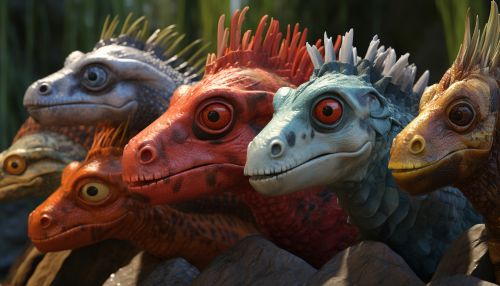Mesoplankton
Overview
Mesoplankton refers to the group of plankton that inhabit the middle part of the water column in aquatic environments, typically between 200 and 2000 meters deep. These organisms are larger than microplankton but smaller than macroplankton, usually measuring between 0.2 and 20 millimeters in size. They play a crucial role in the marine food web, serving as a link between the smaller, photosynthetic microplankton and the larger, predatory macroplankton and nekton.


Classification
Mesoplankton encompasses a wide range of species from different taxonomic groups. They include small crustaceans, such as copepods and amphipods, as well as various types of jellyfish, worms, and larvae of larger marine organisms. The classification of mesoplankton is primarily based on their size, but their ecological roles and life histories are also considered.
Distribution and Habitat
Mesoplankton are found in all types of aquatic environments, from freshwater bodies like lakes and rivers to brackish environments and the open ocean. Their distribution within these environments is influenced by factors such as temperature, salinity, nutrient availability, and light intensity. Mesoplankton are particularly abundant in the mesopelagic zone of the ocean, which extends from 200 to 1000 meters below the surface and is characterized by low light levels and relatively stable temperatures.
Life Cycle and Reproduction
The life cycle and reproductive strategies of mesoplankton vary widely among species. Many undergo complex life cycles that involve different stages and forms, often including a planktonic larval stage. Reproduction can be sexual or asexual, depending on the species. Some mesoplankton, such as copepods, reproduce through a process called parthenogenesis, in which females produce offspring without fertilization by a male.
Role in the Food Web
Mesoplankton are a critical component of the marine food web. They consume microplankton, including phytoplankton and smaller zooplankton, and in turn are preyed upon by larger zooplankton, fish, and other marine organisms. Through their feeding and reproductive activities, mesoplankton contribute to the cycling of nutrients in aquatic ecosystems and play a key role in the biological pump, a process that transports carbon from the surface ocean to the deep sea.
Research and Monitoring
Mesoplankton are an important subject of scientific research due to their ecological significance and potential as indicators of environmental change. Researchers use a variety of methods to study mesoplankton, including net sampling, acoustic surveys, and imaging techniques. Monitoring the abundance and distribution of mesoplankton can provide valuable information about the health and productivity of aquatic ecosystems, as well as the impacts of human activities and climate change.
